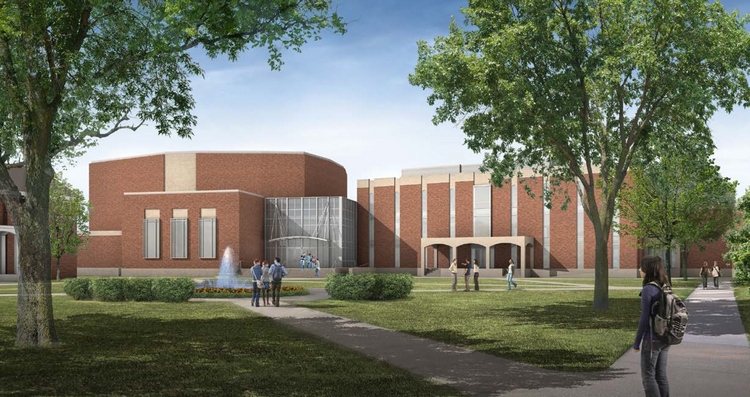
CHICAGO, Ill. – Mortenson Construction is launching a major building project on the Wheaton College campus in Wheaton, Illinois, to create a state-of-the art performing arts center. In the $18 million first phase of the project, Mortenson is rebuilding the three stories and basement of a gutted 50,000-square-foot former science building into the new home for the school’s Conservatory of Music.
The new Armerding Center for Music and the Arts, set to open in the fall of 2017, will include recording studios; a two-story,110-seat Recital Hall with green room; digital keyboard lab; chamber rehearsal and performance spaces; classrooms; practice rooms and faculty and administrative offices. The second phase calls for demolishing an adjacent building and constructing a Concert Hall, which will include performances for the public and is part of Wheaton College’s long-standing commitment to its music program as well as to serving local, regional and national audiences.
Acoustics and sound control are paramount in a conservatory of music, leading to special design and construction considerations and choices. To manage sound isolation from room to room, Mortenson will be installing double ceilings and double stud walls. They are also installing a chilled-beam heating and cooling system that provides low-noise humidity control. The system’s shorter profile also reduces the amount of ductwork, which is important since the double ceilings limit the space. For more acoustic separation, Mortenson will be building isolated flooring systems and installing acoustical wall treatments.
Conservatories require other considerations. Armerding’s hallways and one elevator will be extra-wide to accommodate moving pianos, for instance. Additionally, rooms are sized and shaped to accommodate small group practice and study, and wood lockers are designed to accommodate instrument storage to ease student class transitions.
Mortenson is using 3-D computer modeling and laser scanning to streamline the process and ensure high quality. Using these virtual models to lay out the mechanical, electrical, plumbing and fire protection systems prior to building them in the field allows the subcontractors to fully integrate with each other to ensure an acoustically sound system while achieving the highest ceiling heights allowable given the Armerding height constraints. Because every opening has the potential to impact acoustical excellence, Mortenson also is using the virtual models to coordinate electrical pathways to reduce the number of penetrations.
Rendering of the Armerding Center for Music and the Arts is courtesy of HGA.


 Join our thriving community of 70,000+ superintendents and trade professionals on LinkedIn!
Join our thriving community of 70,000+ superintendents and trade professionals on LinkedIn! Search our job board for your next opportunity, or post an opening within your company.
Search our job board for your next opportunity, or post an opening within your company. Subscribe to our monthly
Construction Superintendent eNewsletter and stay current.
Subscribe to our monthly
Construction Superintendent eNewsletter and stay current.